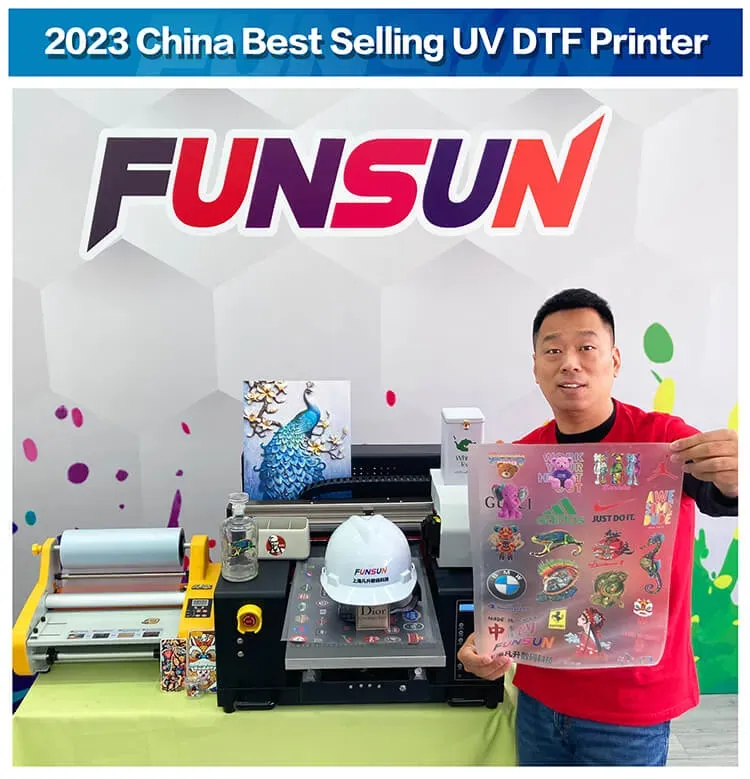UV DTF printing is revolutionizing the way we think about modern print technologies, combining the best of innovation with the practical needs of various industries. Unlike traditional printing methods such as screen printing and digital printing, UV Direct to Film (DTF) printing harnesses the power of ultraviolet light to instantly cure inks, resulting in vibrant, durable prints across a wide array of materials. This advanced technique not only offers superior color saturation but also enhances the durability of printed items, setting a new standard in eco-friendly printing solutions. As the demand for high-quality, long-lasting prints increases, UV DTF printing emerges as a cost-effective alternative that effectively meets the needs of both artists and small businesses alike. In this post, we will delve into the technology and benefits of UV DTF printing, showcasing how it measures up against traditional printing methods.
In the world of print production, innovative approaches like UV Direct to Film printing have begun to overshadow conventional options. Often referred to by alternatives such as UV printing technology, this method utilizes ultraviolet light for rapid ink curing, making it a standout option in comparison to more traditional techniques like screen printing and digital printing. As industries evolve, many are seeking eco-friendly printing solutions, leading to a rise in favor for methods that merge sustainability with efficiency. This introductory overview of UV DTF printing highlights its modern capabilities and the way it enhances material versatility, color vibrancy, and durability of print products. The transition to such advanced techniques not only allows for stunning output but also meets the growing consumer demands for more environmentally conscious production methods.
Understanding UV DTF Printing Technology
UV Direct to Film (DTF) printing represents a significant breakthrough in the printing industry, merging traditional printing’s quality with modern technological advancements. By using ultraviolet light to cure ink directly onto a film, this method allows for the creation of robust and vibrant designs that are not only visually appealing but also incredibly durable. The capability to print on a variety of surfaces, such as wood, metal, and plastics, makes UV DTF printing a versatile choice for marketers and artisans alike.
This printing technology also supports intricate designs with fantastic color saturation, ensuring that your branding or artistic expression stands out. Unlike traditional methods such as screen printing, which can restrict design complexity and material diversity, UV DTF opening up new avenues for creativity and innovation helps in meeting a wide range of customer demands in various industries.
Advantages of UV DTF Over Traditional Printing Methods
One of the most compelling advantages of UV DTF printing is its versatility, allowing it to accommodate a far broader spectrum of materials compared to traditional methods like screen printing. Traditional printing techniques often require specific substrates and may yield subpar results on unconventional materials. In contrast, UV DTF’s adaptability permits its usage on everything from promotional clothing to hard surfaces, supporting an array of applications without compromising the quality.
Moreover, UV DTF printing offers significant durability benefits. UV cured prints can endure exposure to outdoor conditions, resist fading, and prove more resilient against physical abrasions. While traditional printing methods can deliver great initial quality, they often fall short in maintaining that quality over time, leading to higher replacement costs and waste. By choosing UV DTF, businesses can invest in prints that stand the test of time.
Eco-Friendly Innovations in UV Printing
As sustainability gains traction across industries, UV DTF printing stands out with its potential for environmentally-friendly practices. Many UV inks are now manufactured to reduce harmful emissions such as volatile organic compounds (VOCs), which are commonly released during the printing process of traditional methods. This eco-friendly approach not only minimizes the environmental impact but also aligns with the increasing consumer demand for sustainable products.
Additionally, by reducing waste due to its efficiency and adaptability to short-run productions, UV DTF printing supports more sustainable business practices. Companies can execute smaller batches without the extensive setups that traditional screen printing requires, thereby lowering overall energy consumption and material waste.
Comparative Durability: UV DTF vs. Traditional Techniques
Durability is a paramount concern for brands when selecting a printing method, and here UV DTF printing shines in comparison to traditional techniques. UV cured inks provide exceptional resistance to scratches, fading, and environmental influences, making them ideal for products subjected to heavy wear and tear, such as merchandise and outdoor signage. Unlike traditional screen printing, known for its vulnerability, UV prints are less likely to deteriorate in quality over time.
This durability factor translates to long-term savings for businesses, as products maintain their visual appeal and functionality for a longer duration. Choosing UV DTF can minimize repurchasing costs associated with damaged or faded prints, providing a reliable solution for those invested in maintaining high-quality branding.
The Future of UV DTF Printing Technology
The future of printing technology lies in continued advancements and innovations in UV DTF printing. As manufacturers develop more efficient and multifunctional printers, the accessibility of high-quality UV printing is becoming increasingly available to small businesses and individual artists. This democratization of technology signals a shift toward more creative freedom and cost-effective solutions that cater to diverse market needs.
Furthermore, emerging trends suggest a growing focus on automation and digital integration within UV DTF printing processes. Enhanced software technologies will likely streamline the design-to-print workflow, enabling faster production times and greater precision, which are critical in responding to market demands swiftly.
Exploring Traditional Printing Methods: A Comparative Overview
To fully appreciate the emergence of UV DTF printing, it’s essential to understand traditional printing methods such as screen printing and digital printing. Screen printing, a long-standing technique, excels in producing vivid colors and high fidelity, especially for large order quantities. However, setup requirements and longer lead times can pose limitations for smaller projects.
In contrast, digital printing provides flexibility and quick turnaround, making it ideal for small batches and custom designs. Yet, digital prints often lack the durability of UV prints and might involve higher costs for larger orders. Understanding the strengths and weaknesses of these traditional methods ultimately helps businesses make informed decisions on which technology best serves their needs, whether they opt for the reliability of the established methods or the innovative advantages of UV DTF printing.
Frequently Asked Questions
What is UV DTF printing and how does it differ from traditional printing methods?
UV DTF printing, or UV Direct to Film printing, is an advanced printing technique that uses ultraviolet light to cure inks on various films. Unlike traditional methods such as screen printing and digital printing, UV DTF offers greater versatility in material usage, vibrant colors, and increased durability of printed products.
What are the benefits of UV DTF printing compared to traditional screen printing?
UV DTF printing provides several advantages over traditional screen printing, including the ability to print on a wide range of materials, higher detail and color vibrancy, and a more eco-friendly approach with lower VOC emissions, making it suitable for various applications in today’s green-conscious market.
How does UV DTF printing contribute to eco-friendly printing practices?
UV DTF printing is considered eco-friendly as it utilizes UV-cured inks that emit fewer volatile organic compounds (VOCs) than traditional printing methods. This reduced emission helps minimize the environmental impact of printing, aligning with modern sustainability goals.
Is UV DTF printing cost-effective for small production runs?
Yes, UV DTF printing is highly cost-effective for small production runs. Unlike traditional methods that require significant setup costs, UV DTF allows for quick design changes and produces smaller batches efficiently, making it ideal for artists and small businesses.
What types of materials can be printed using UV DTF technology?
UV DTF printing boasts remarkable material versatility, allowing printing on textiles, wood, metal, plastic, and more. This capability opens up various applications, from fashion items to promotional products and home decor, surpassing traditional printing limitations.
How does UV DTF printing compare in quality to other digital printing methods?
UV DTF printing typically results in superior print quality compared to traditional digital printing methods. It achieves higher color saturation, intricate details, and impressive durability, making it a more reliable choice for long-lasting printed materials.
| Aspect | UV DTF Printing | Traditional Methods |
|---|---|---|
| Material Versatility | Prints on various surfaces (textiles, wood, metal, plastic) | Limited to specific materials, especially in screen printing. |
| Color Saturation and Detail | High-quality images with vibrant colors and intricate details | Struggles with achieving the same level of detail as UV DTF. |
| Durability | Resistant to scratches, fading, and environmental wear | Less durable, may fade or scratch easily. |
| Eco-Friendliness | Some inks are eco-friendly with low VOC emissions | Often produces higher levels of harmful emissions. |
| Cost-Effectiveness for Short Runs | Ideal for small batches and quick design changes | Setup costs make it economical only for large orders. |
Summary
UV DTF printing is rapidly revolutionizing the printing landscape, offering a modern solution that outperforms traditional printing methods in many areas. With its exceptional versatility, vibrant color reproduction, and heightened durability, UV DTF printing stands as a superior option for various applications. This advanced method not only caters to a wide array of materials but also aligns with eco-friendly practices, making it an attractive choice for businesses and artists alike. As advancements continue within this technology, it is clear that UV DTF printing is paving the way for a more innovative and sustainable future in the printing industry.



